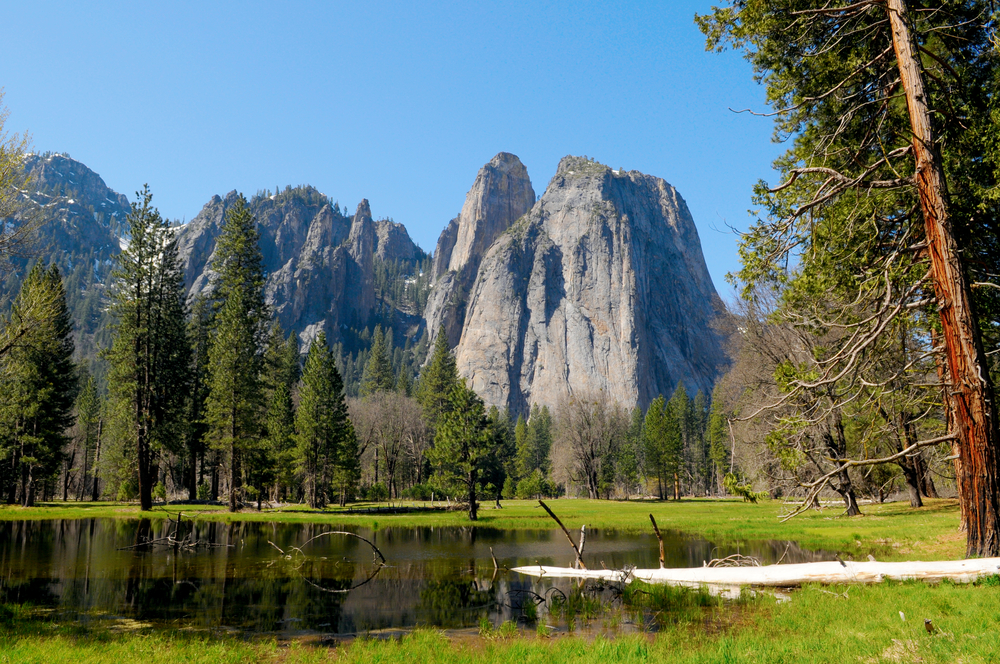A national park honeymoon is ideal for outdoorsy newlyweds with a sense of adventure. In the US, the National Park System comprises over 400 national park sites that occupy 84 million acres of land.
Table of Contents
Is a National Park a Good Honeymoon Destination?
Absolutely! Going to a national park for your post-wedding getaway means commencing your marital life with an adventurous bang. These unique lands are filled with geysers, waterfalls, hiking trails, campgrounds, wildlife encounters, and other natural wonders.
When Is the Best Time of Year to Honeymoon in a National Park?
The best time of year for a national park honeymoon largely depends on the location of the park you want to visit.
West Coast
Fall (around September to December) is a great time to be on the West Coast. The weather is generally milder and ideal for many outdoor activities.
Northeast
Between June and October is the best time to explore national parks in the Northeast. You can hike, sail, swim, walk, and avoid the biting cold breeze of the winter season.
Midwest
When visiting Midwest, let your trip fall between June and September. You can experience the best weather of the year and enjoy various honeymoon adventures.
How Many Days Should You Spend in a National Park For Your Honeymoon?
When visiting the best national parks in the US, you should allocate 3 to 5 days, depending on the park’s size. If you want a multi-park itinerary, a timeframe of 2 to 3 weeks (or even a few months) is ideal. Remember to set aside half a day (or a full day) when traveling from one park to another.
What Activities Can You Enjoy During a Honeymoon in a National Park?
- Biking, hiking, and horseback riding. National parks have acres of land you can navigate while riding a bike or a horse. If you’re up for more sweat-inducing adventures, you can hike through elevated terrains and enjoy stunning views from the peak.
- Kayaking, rafting, canoeing, and swimming. If you want some aquatic adventures, many national parks offer kayaking, white water rafting, and canoeing. You can also take a trip to waterfalls within the premises and swim with your new spouse.
- Camping and stargazing. National parks don’t just offer beautiful vistas during the day. After sundown, you’ll get the best view of night skies dotted with twinkling stars. There are many campsites and RV parks where you can set up your temporary lodging.
- Spotting and catching wildlife. Seeing a wild animal in its natural habitat is beautiful. Some national parks permit hunting and fishing. Remember that you may need to apply for a hunting or fishing license beforehand.
- Going for a scenic drive. Have the road trip of a lifetime when you go to, from, and around a national park. Whether traveling to another national park or taking a day trip to a nearby tourist attraction, you’ll enjoy the company of your loved one as you step on the gas pedal and cruise along scenic roads.
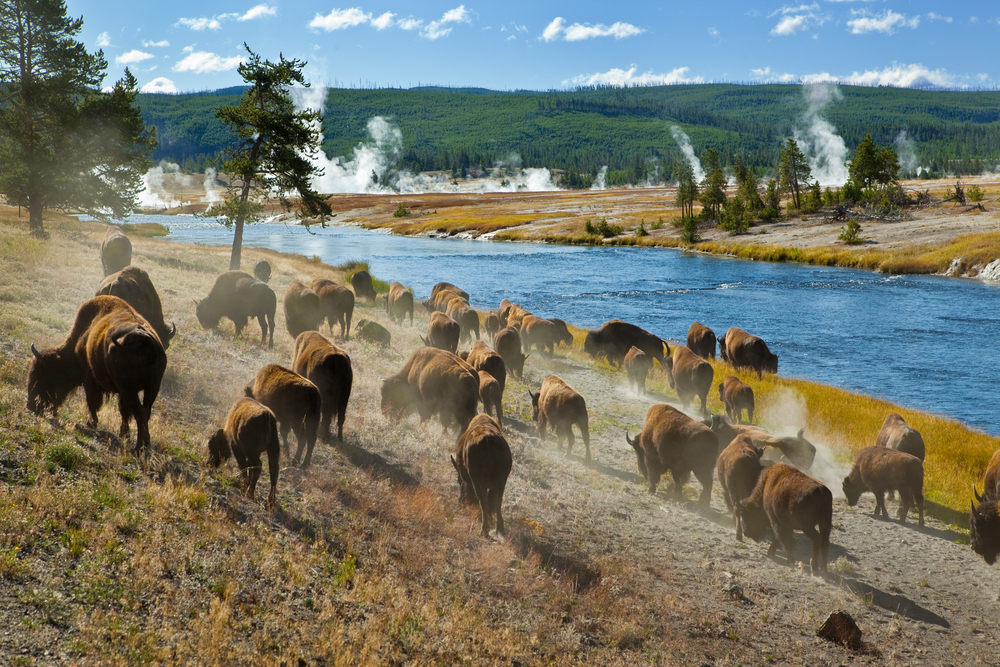
Is a National Park Honeymoon Expensive?
Apart from the flexibility in the activities you want, you can also design a honeymoon itinerary that will fit your budget preferences. You can have a great five-night honeymoon for as low as $2,000. However, this number could quickly rise and reach even over $15,000, depending on your destinations, routes, accommodations, and excursions.
How to Plan a Budget National Park Honeymoon
- Only visit one national park. A national park near your home will likely be the cheapest option.
- Research free activities ahead of time and mark them on your map. Check-in with the visitor’s center when you arrive for more information about excursions and tours.
- Forego the luxury hotels or glamping. Try camping or sleeping in rustic cabins.
7 Best National Parks For Your Honeymoon
Grand Canyon National Park
One of the most iconic national parks, the Grand Canyon is situated in the heart of the Colorado River in Arizona, encompassing nearly 280 miles. There are loads of things to do here, from indulging in gorgeous views from the North and South Rim, visiting Horseshoe Bend for a couple’s photo opportunity, hopping aboard the Grand Canyon Railway, to rafting on a river, and watching a beautiful Grand Canyon sunset.

Accommodation: You can find lodges and village hotels in the North and South Rim. First-time visitors prefer the South because of its nearness to tourist activities and amenities. Glamping accommodations are also available nearby.
Weather: The average high-temperature hovers around the 70s to 80s°F during summer and 30s to 40s during winter. The average snowfall in the North Rim is 142 inches annually, 58 inches in the South Rim, and less than 1 inch in Phantom Ranch.
Yosemite National Park
This national park near the Sierra Nevada Mountains in California has many great tourist attractions. Here you’ll find Yosemite Falls, Half Dome (a granite dome in Yosemite Valley), Giant Sequoia, and Glacier Point, a viewpoint above the valley that lets you see High Sierra and more.
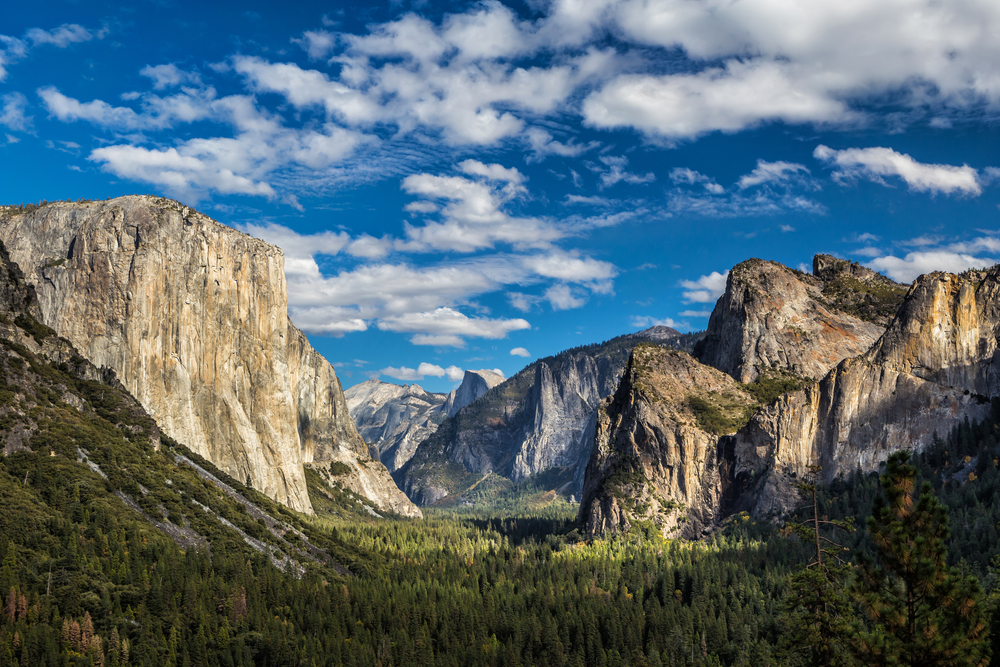
Accommodation: Accommodation options run aplenty in Yosemite National Park. There are cozy cabins, vacation home rentals, premier lodges, and hotels like the Ahwahnee Hotel and Yosemite Valley Lodge.
Weather: The average temperature is 90°F during summer and 30s during winter. The average snowfall is 29 inches during the entire winter season.
Yellowstone National Park
Occupying Wyoming and extending into Montana and Idaho, Yellowstone National Park is the US’ oldest and largest (at 2 million acres) national park. There is plenty to admire, from the Old Faithful Geyser to Mammoth Hot Springs to the Grand Canyon of Yellowstone. Being a formerly active volcano, Yellowstone boasts several hydrothermal and geologic features. You can also take a day trip to another Wyoming park, the Grand Teton National Park.
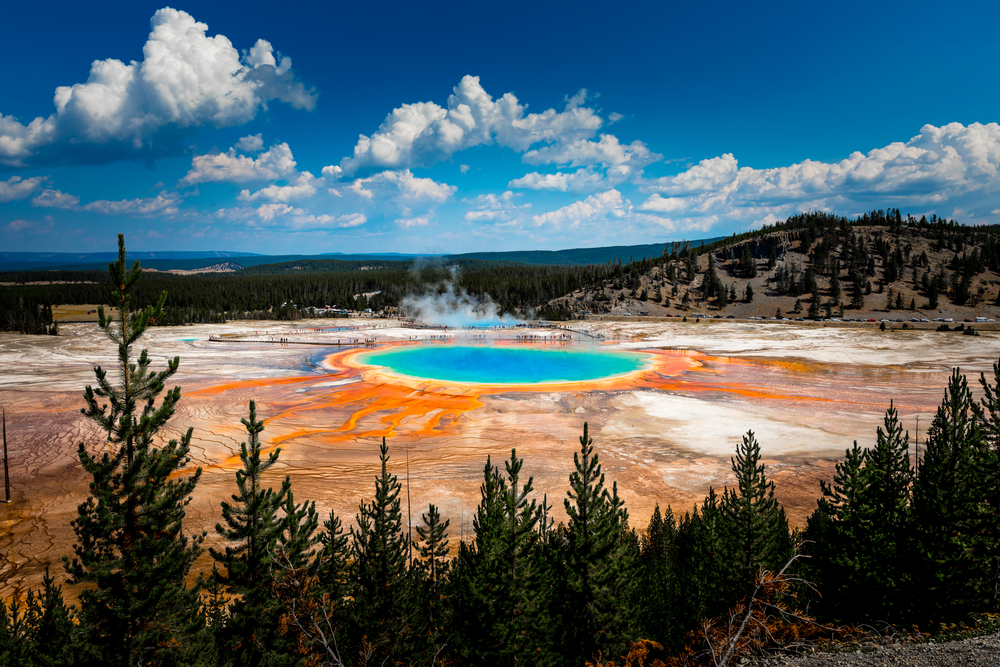
Accommodation: The national park has nine lodging facilities with over 2,000 rooms. There are also dedicated camping sites and RV parks.
Weather: The average temperature is in the mid-70s°F during summer and around the mid-20s during winter. The average snowfall is around 150 inches yearly and 200 to 400 inches at higher elevations.
Bryce Canyon National Park
In Southwestern Utah, Bryce Canyon National Park is a beautiful honeymoon destination. It boasts breathtaking “hoodoo” orange spire-shaped rock formations. You can watch the sunsets and sunrises with your significant other at iconic viewpoints, ride horses, go hiking, or book an ATV tour.
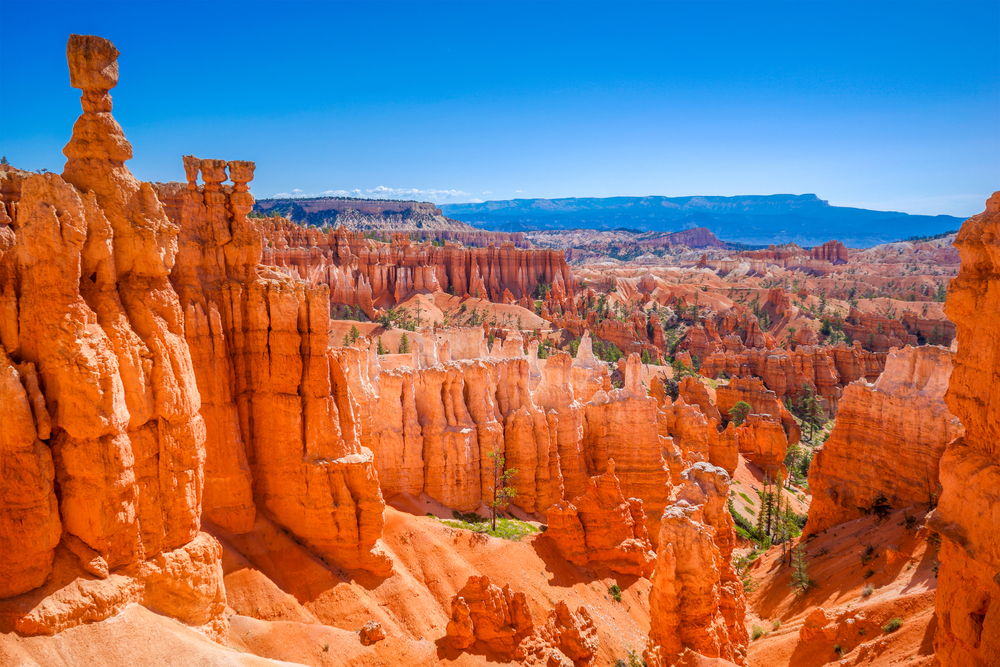
Accommodation: You can find Bryce Canyon City outside the park. The most popular accommodation there is a hotel called Ruby’s Inn. The city comprises amenities you need as a tourist, including a grocery store, a gas station, and various restaurants. Apart from lodges, you can camp and rent a yurt tent.
Weather: The average temperature is 80°F in summer and 40 degrees in winter. The average snowfall every year is 100 inches.
Zion National Park
This Utah-located national park is a few hours away from Bryce Canyon. Majestic, beautiful, and romantic, Zion National Park offers outdoorsy and relaxing activities. You can hike the famous Angel’s Landing, explore trails, visit the Pine Creek Gorge Slot Canyon, and then unwind at nearby spas.
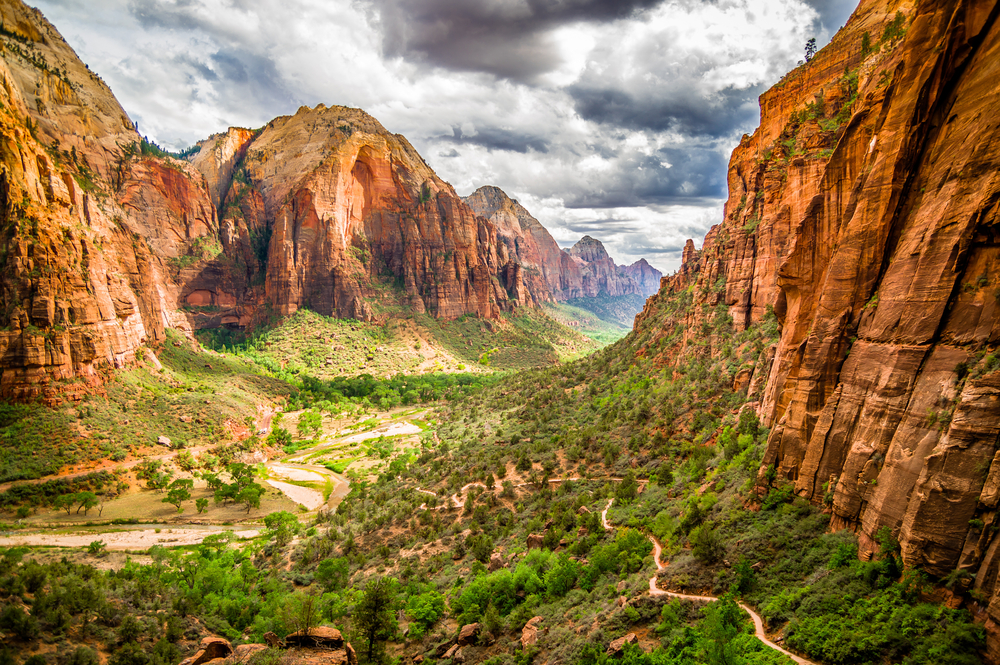
Accommodation: The only in-park lodging is the Zion National Park Lodge. It offers 76 rooms, 40 historic cabins, and 6 suites.
Weather: The average temperature ranges from 70 to 100°F in summer and 30 to 50 degrees in winter. The average snowfall is around 156 inches every year.
Glacier National Park
This Montana national park expands into Canada, where it is known as Waterton Lakes National Park. Apart from hiking trails and majestic glacial lakes and mountains, you can drive the popular Going-to-the-Sun-Road to make your trip even more unforgettable. While watching the sunset is beautiful, you should also make time to look at the gorgeous night sky.
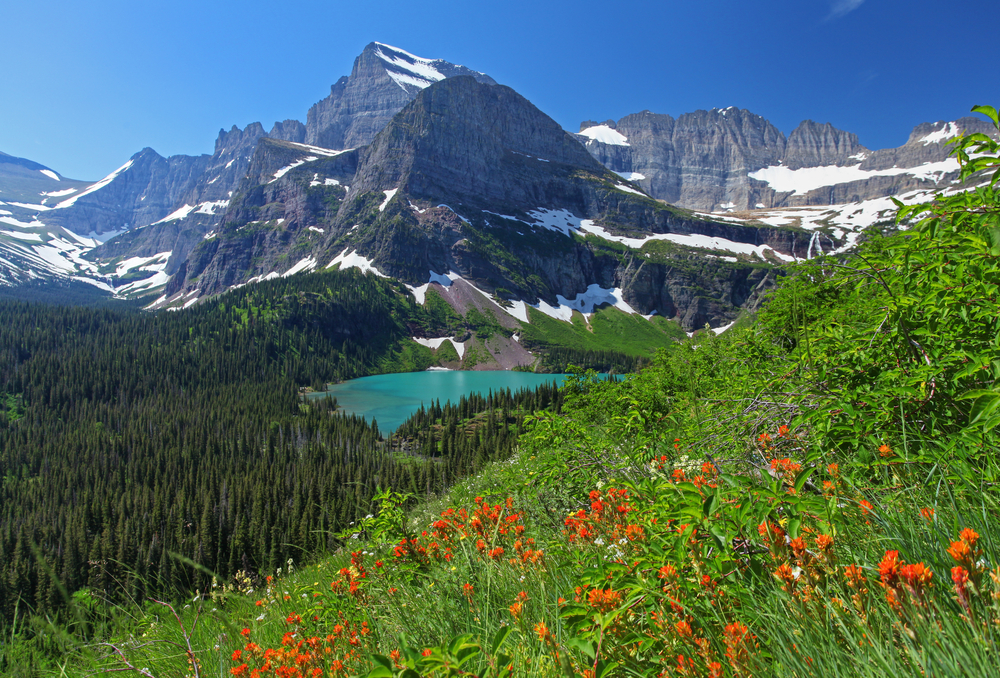
Accommodation: Rustic cabins, historic grand hotels, and motor inns are your choices if you will stay at Glacier National Park.
Weather: The average high hovers around 70°F in summer and the mid-20s degrees in winter. The park receives an average snowfall is around 157 inches every year.
Acadia National Park
Acadia National Park is the pride of Maine. Besides the towering mountains, you will be in awe at the beauty of its shorelines (visiting Thunder Hole is a must) and its fall foliage. Make sure to wake up early one day to witness the sunrise views at Cadillac Mountain. Apart from hiking, one of the popular activities here is taking a boat tour. The park takes pride in its 60 miles of coastline and 18 islands in the Gulf of Maine.
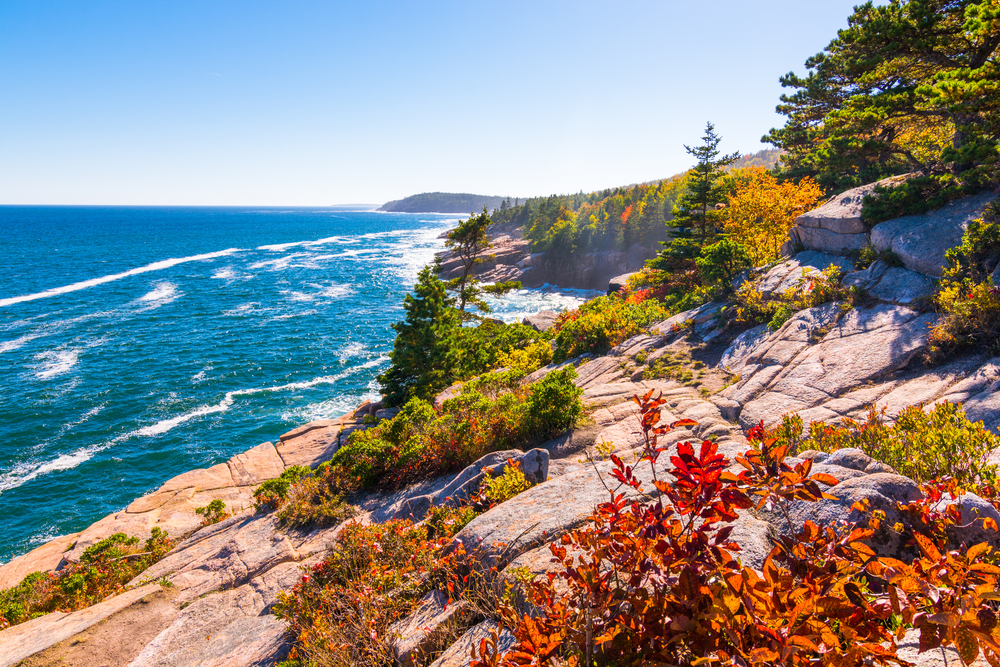
Accommodation: There are highly-rated lodging facilities in and around the park. There’s the 95-room Acadia Inn and the Acadia Hotel, which was first built in the 1880s.
Weather: The average temperature is nearly 80°F in summer and below 40 degrees in winter. Annually, the average snowfall is 62 inches.
How to Plan an Itinerary For a National Park Honeymoon
Plan It Yourself
A do-it-yourself honeymoon is easier financially. However, the challenge lies in the planning and execution of its logistics. If you prefer to plan your post-wedding trip, the primary things to consider are the kind of adventure you want, your timeline, and your budget.
Some couples make do with just one national park, while others go on a road trip and visit more than one. Whatever option you pick, do your research well. Contacting a park’s visitor center will make it easier to learn up-to-date information about the destination you’re eyeing to explore.
One major downside of a DIY honeymoon is that you must pack and carry what you need, depending on your desired activities (e.g., camping tents, kayaking gear).
Hire a Tour Operator
The most significant benefit of hiring a tour operator is convenience. You select your operator, choose from their packages, communicate for specific queries or customizations, then settle the payment. You can leverage their expertise in national park vacations and rely on their intimate knowledge about the different national park sites and tours.
The only possible downside is a lack of spontaneity and privacy.
How to Choose a Tour Operator For a National Park Honeymoon
If you’re hiring a tour operator for your romantic getaway, research their reputation, experience, and what previous couples say about their services. In the US, some of the top-rated tour operators are Globus, Project Expedition, Interid Travel, Tauck, and G Adventures.
What to Pack For a National Park Honeymoon
Below are some of the essentials you need:
- Sturdy backpacks
- Reusable water bottles
- Compass
- Park map
- Binoculars
- First aid kit
- Bug repellant
- Protective hat
- Sunscreen
- Glasses
- Snacks
- Cooler for food storage
- Picnic tablecloth
- Comfortable footwear
- Outdoor wear
- Insulated and rain jackets
- Phone chargers
- Towels
Is a Honeymoon in a National Park Safe?
Yes, national park honeymoons are safe, but you must take precautions.
- Before you go, plan an itinerary that fits your physical capacity. Always play it safe, and don’t overexert yourself if you feel incapable of doing rigorous activities.
- Stay on the right track at the park and always stick together. Keep your distance from any park wildlife. Be mindful of all park rules and warnings stated at the visitor center.
- For future visitors’ safety and to help maintain the cleanliness of the area, always pack out your garbage.

